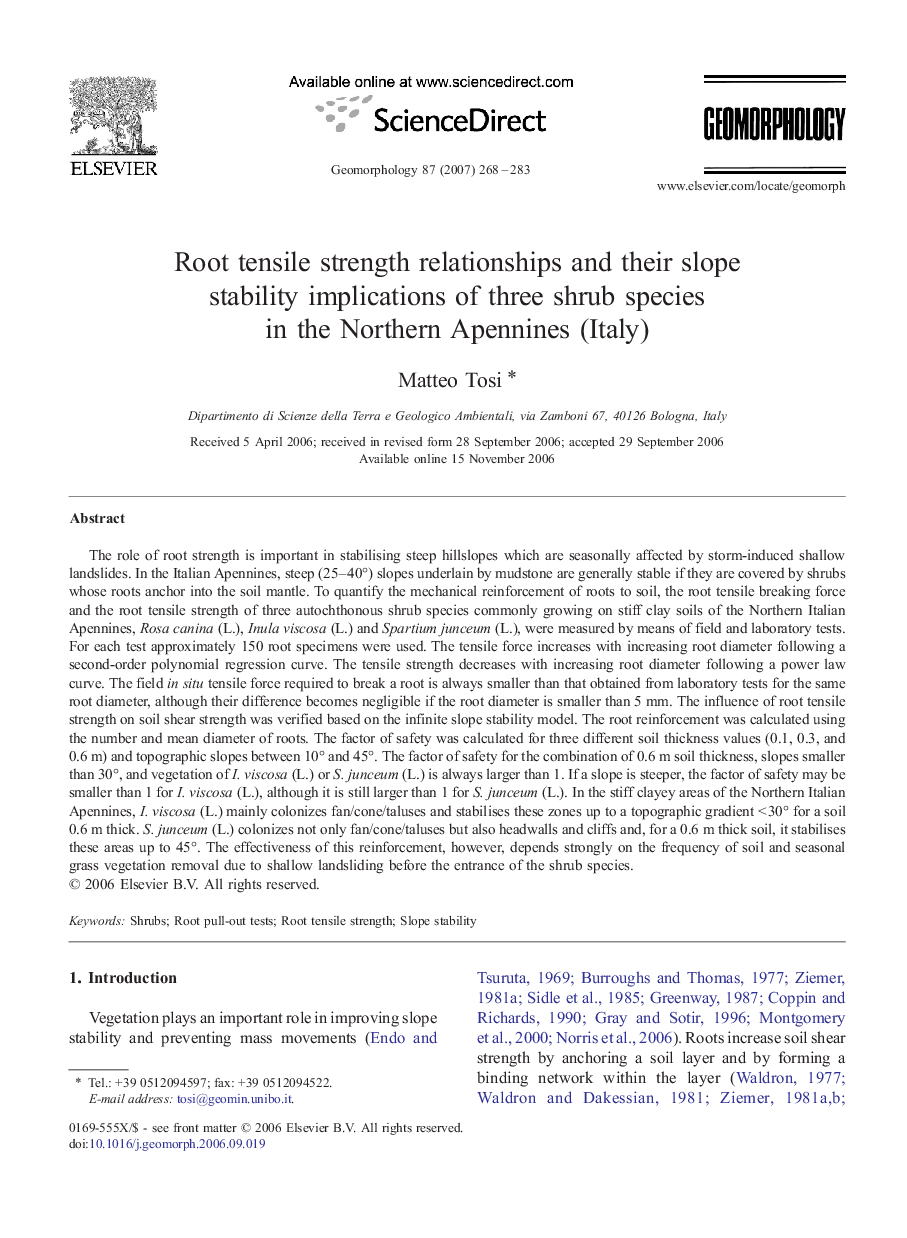| کد مقاله | کد نشریه | سال انتشار | مقاله انگلیسی | نسخه تمام متن |
|---|---|---|---|---|
| 4687209 | 1349590 | 2007 | 16 صفحه PDF | دانلود رایگان |

The role of root strength is important in stabilising steep hillslopes which are seasonally affected by storm-induced shallow landslides. In the Italian Apennines, steep (25–40°) slopes underlain by mudstone are generally stable if they are covered by shrubs whose roots anchor into the soil mantle. To quantify the mechanical reinforcement of roots to soil, the root tensile breaking force and the root tensile strength of three autochthonous shrub species commonly growing on stiff clay soils of the Northern Italian Apennines, Rosa canina (L.), Inula viscosa (L.) and Spartium junceum (L.), were measured by means of field and laboratory tests. For each test approximately 150 root specimens were used. The tensile force increases with increasing root diameter following a second-order polynomial regression curve. The tensile strength decreases with increasing root diameter following a power law curve. The field in situ tensile force required to break a root is always smaller than that obtained from laboratory tests for the same root diameter, although their difference becomes negligible if the root diameter is smaller than 5 mm. The influence of root tensile strength on soil shear strength was verified based on the infinite slope stability model. The root reinforcement was calculated using the number and mean diameter of roots. The factor of safety was calculated for three different soil thickness values (0.1, 0.3, and 0.6 m) and topographic slopes between 10° and 45°. The factor of safety for the combination of 0.6 m soil thickness, slopes smaller than 30°, and vegetation of I. viscosa (L.) or S. junceum (L.) is always larger than 1. If a slope is steeper, the factor of safety may be smaller than 1 for I. viscosa (L.), although it is still larger than 1 for S. junceum (L.). In the stiff clayey areas of the Northern Italian Apennines, I. viscosa (L.) mainly colonizes fan/cone/taluses and stabilises these zones up to a topographic gradient < 30° for a soil 0.6 m thick. S. junceum (L.) colonizes not only fan/cone/taluses but also headwalls and cliffs and, for a 0.6 m thick soil, it stabilises these areas up to 45°. The effectiveness of this reinforcement, however, depends strongly on the frequency of soil and seasonal grass vegetation removal due to shallow landsliding before the entrance of the shrub species.
Journal: Geomorphology - Volume 87, Issue 4, 1 July 2007, Pages 268–283